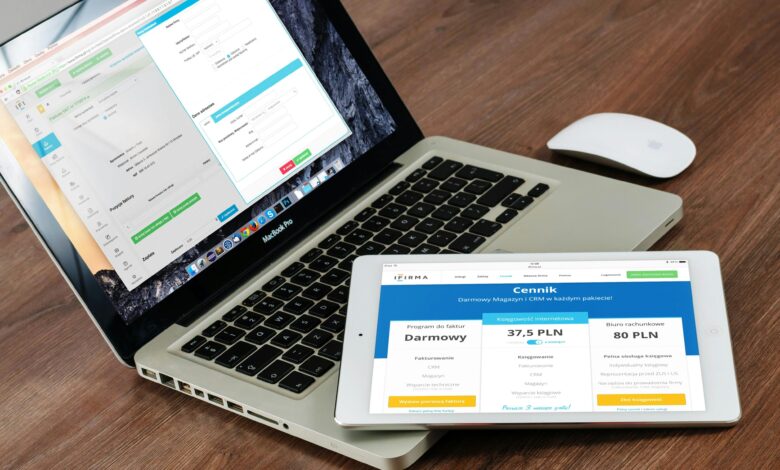The Best Cybersecurity Tools for Cloud Security

As businesses increasingly migrate their operations to the cloud, ensuring robust cloud security has become a top priority. The cloud offers unparalleled flexibility, scalability, and cost-efficiency, but it also introduces unique cybersecurity challenges, such as data breaches, misconfigurations, and unauthorized access. To protect sensitive data and maintain compliance, organizations must leverage specialized cybersecurity tools designed specifically for cloud environments.
In this article, we’ll explore the best cybersecurity tools for cloud security , categorized by their primary functions, to help you safeguard your cloud infrastructure effectively.
1. Cloud Security Posture Management (CSPM)
CSPM tools continuously monitor cloud environments to identify and remediate misconfigurations, policy violations, and compliance risks.
1.1 Prisma Cloud by Palo Alto Networks
- Best For : Comprehensive cloud security across multi-cloud environments.
- Key Features :
- Real-time visibility into cloud assets and configurations.
- Automated detection and remediation of misconfigurations.
- Compliance monitoring for standards like GDPR, HIPAA, and PCI DSS.
- Why Choose It : Prisma Cloud provides end-to-end protection for workloads, applications, and data in the cloud.
1.2 Aqua Security
- Best For : Containerized and serverless environments.
- Key Features :
- Vulnerability scanning for containers and Kubernetes clusters.
- Runtime protection to detect and block threats.
- Integration with CI/CD pipelines for DevSecOps.
- Why Choose It : Aqua Security is ideal for organizations using modern cloud-native technologies.
1.3 Qualys Cloud Platform
- Best For : Unified cloud security and compliance management.
- Key Features :
- Asset discovery and inventory management.
- Continuous monitoring for vulnerabilities and misconfigurations.
- Web application scanning and firewall integration.
- Why Choose It : Qualys offers a single platform for multiple security needs, simplifying cloud security management.
2. Cloud Access Security Brokers (CASB)
CASBs act as intermediaries between users and cloud service providers, enforcing security policies and protecting data in transit.
2.1 Microsoft Defender for Cloud Apps
- Best For : Microsoft 365 and Azure users.
- Key Features :
- Shadow IT discovery to identify unsanctioned cloud apps.
- Data loss prevention (DLP) and encryption.
- Threat detection and response capabilities.
- Why Choose It : Seamlessly integrates with Microsoft ecosystems for enhanced security.
2.2 Netskope
- Best For : Real-time data protection and threat defense.
- Key Features :
- Advanced DLP and encryption for sensitive data.
- Inline inspection of cloud traffic.
- Support for SaaS, IaaS, and web applications.
- Why Choose It : Netskope provides granular control over cloud usage and protects against advanced threats.
2.3 McAfee MVISION Cloud
- Best For : Multi-cloud environments with a focus on compliance.
- Key Features :
- Automated policy enforcement for regulatory compliance.
- User behavior analytics to detect anomalies.
- Collaboration controls for shared files and documents.
- Why Choose It : McAfee’s tool ensures consistent security policies across diverse cloud platforms.
3. Cloud Workload Protection Platforms (CWPP)
CWPPs secure workloads running in the cloud, including virtual machines, containers, and serverless functions.
3.1 Trend Micro Cloud One
- Best For : Protecting hybrid and multi-cloud workloads.
- Key Features :
- File storage security and workload scanning.
- Network segmentation and intrusion detection.
- Centralized management console for visibility.
- Why Choose It : Trend Micro provides comprehensive protection for diverse cloud environments.
3.2 CrowdStrike Falcon Cloud Workload Protection
- Best For : Real-time threat detection and response.
- Key Features :
- Behavioral analysis to detect zero-day attacks.
- Lightweight agent for minimal performance impact.
- Integration with CrowdStrike’s endpoint protection platform.
- Why Choose It : CrowdStrike excels at identifying and mitigating sophisticated threats targeting cloud workloads.
3.3 Check Point CloudGuard
- Best For : Automated security for dynamic cloud environments.
- Key Features :
- Auto-scaling security policies for elastic workloads.
- Threat prevention and sandboxing.
- Compliance reporting and auditing.
- Why Choose It : Check Point’s solution adapts to changing cloud infrastructures while maintaining strong security.
4. Identity and Access Management (IAM)
IAM tools ensure that only authorized users can access cloud resources, reducing the risk of insider threats and account compromise.
4.1 Okta
- Best For : Single sign-on (SSO) and multi-factor authentication (MFA).
- Key Features :
- Centralized identity management for employees and customers.
- Adaptive MFA based on user behavior and context.
- Seamless integration with popular cloud services.
- Why Choose It : Okta simplifies access management while enhancing security through adaptive controls.
4.2 Ping Identity
- Best For : Enterprise-grade IAM solutions.
- Key Features :
- Federated identity management for SSO.
- Risk-based authentication to prevent unauthorized access.
- API security for protecting integrations.
- Why Choose It : Ping Identity is highly scalable and suitable for large enterprises with complex requirements.
4.3 AWS Identity and Access Management (IAM)
- Best For : Organizations using Amazon Web Services (AWS).
- Key Features :
- Fine-grained access control for AWS resources.
- Role-based access management.
- Integration with other AWS security services.
- Why Choose It : AWS IAM is tightly integrated with AWS services, making it an excellent choice for AWS-centric businesses.
5. Data Loss Prevention (DLP)
DLP tools monitor and protect sensitive data stored in the cloud, preventing unauthorized sharing or exposure.
5.1 Symantec Data Loss Prevention (Broadcom)
- Best For : Comprehensive data protection across endpoints, networks, and clouds.
- Key Features :
- Discovery and classification of sensitive data.
- Policy enforcement to block unauthorized actions.
- Incident response and forensic analysis.
- Why Choose It : Symantec’s DLP solution is widely trusted for its depth and reliability.
5.2 Forcepoint DLP
- Best For : Context-aware data protection.
- Key Features :
- Real-time monitoring of data movement.
- User activity tracking and risk scoring.
- Integration with cloud storage providers like Google Drive and Dropbox.
- Why Choose It : Forcepoint focuses on understanding user intent to prevent accidental or malicious data leaks.
5.3 Varonis DatAdvantage
- Best For : Protecting unstructured data in the cloud.
- Key Features :
- Automated permissions management.
- Anomaly detection for suspicious activities.
- Detailed audit trails for compliance.
- Why Choose It : Varonis specializes in securing file shares and collaboration platforms, which are common targets for attackers.
6. Threat Detection and Response
These tools use advanced analytics and artificial intelligence to detect and respond to threats in real time.
6.1 Splunk Phantom
- Best For : Security orchestration, automation, and response (SOAR).
- Key Features :
- Automated playbooks for incident response.
- Integration with third-party security tools.
- Case management for tracking investigations.
- Why Choose It : Splunk Phantom streamlines threat response workflows, improving efficiency and reducing response times.
6.2 Darktrace
- Best For : AI-driven threat detection.
- Key Features :
- Self-learning algorithms to detect anomalies.
- Real-time alerts for emerging threats.
- Visualization of attack paths and vulnerabilities.
- Why Choose It : Darktrace’s AI capabilities make it adept at identifying subtle signs of compromise.
6.3 IBM QRadar
- Best For : Enterprise-level threat detection and SIEM.
- Key Features :
- Log and event correlation for deep insights.
- Behavioral analytics to spot unusual patterns.
- Customizable dashboards for monitoring.




